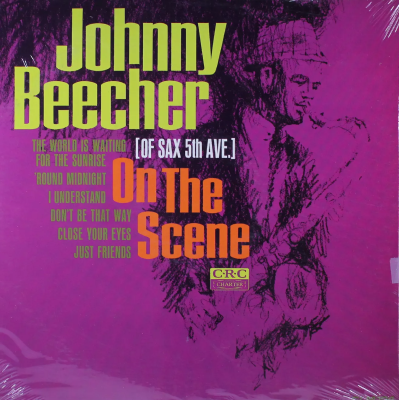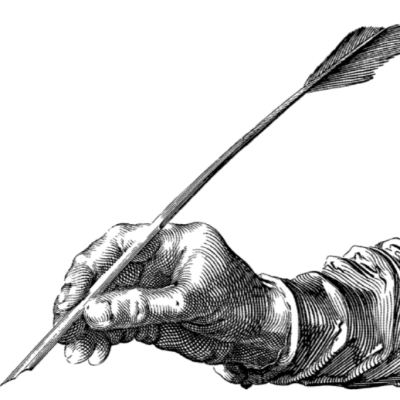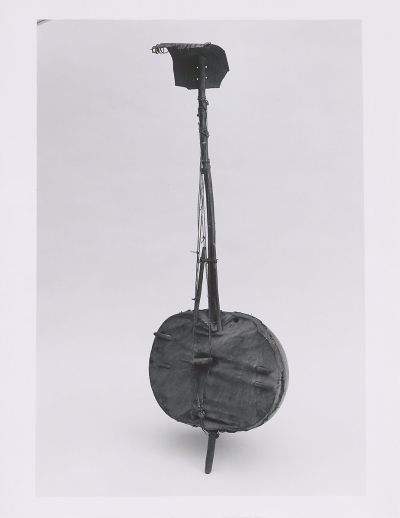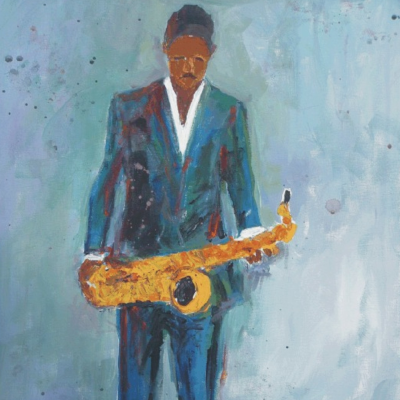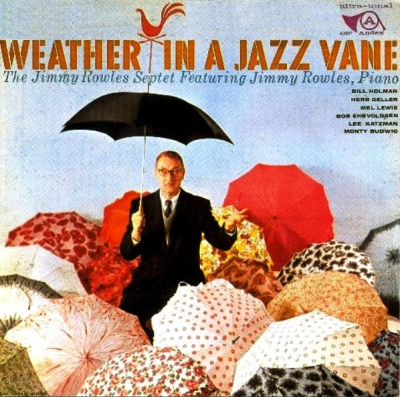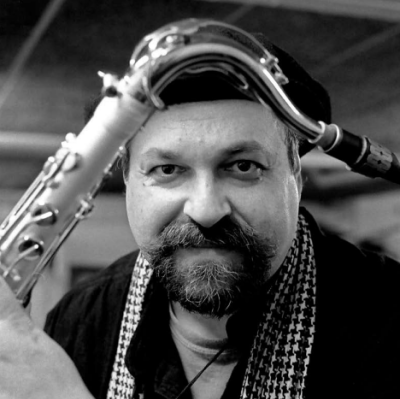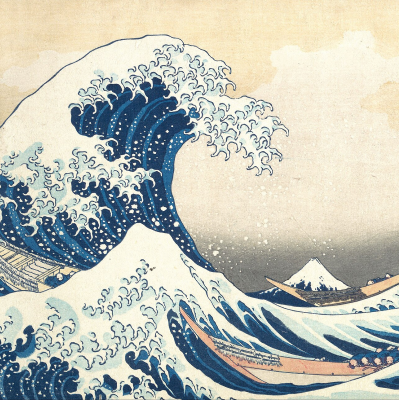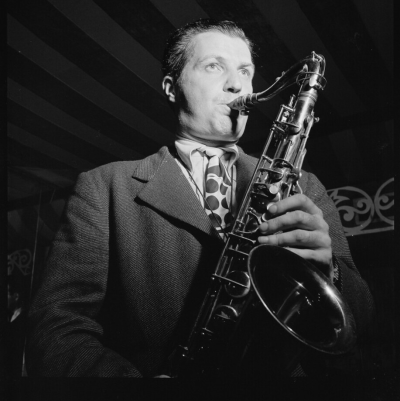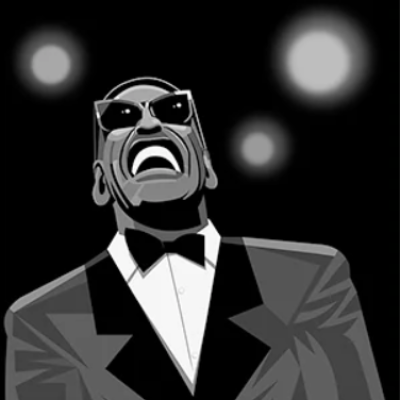SAX TIME
Major musician John Fick leads a big kick band
at the front of seven saxophones,
The bright brass army swing with the rhythm section.
It is not a battle of big bands where Saints march in.
The Hermosa waterfront Lighthouse club is not a war zone.
John Fick aims to invade the hearts and young ears of
a new generation with the most American art form
God Bless jazz. Long may it wave.
Players pick up a weapon like an ax with a mellow tone.
They swing a saxophone, Tenor, Alto or Baritone.
Lionel Hampton came flying home to the old Paramount
theater after WWII.
Now is the hour to have sax not war.
Veteran Fans of big bands reunite in the Old Lighthouse.
Shela sits on a high stool at her favorite end of the bar.
Remembering players like Charlie Parker and Diz
pointing his horn toward heaven.
The Lighthouse jazz joint has been her Cheers for decades to
pick up dance partners and the latest jazz lick from artists like
John Fick who takes a throbbing solo on his Bari.
She thinks of Gerry Mulligan and nods and sways to the beat.
One of the last of hep cats walks up to her and holds out
his hand in an invitation to dance,
He looks cool in a zoot suit and black and white shoes.
She shakes her head and declines his offer and says,
“I’d love to dance but I might get dizzy and fall down
and pull you on top of me.”
“It would be a pleasure,” he takes her hand in his and
leads her to the floor where they boogie to a mellow tone.
The instrument of mass love is a saxophone.
We need great sax not more war.
____________
JAZZ ON THE ROCKS
I walk to The Lighthouse and back
Which isn’t as hard as it sounds since
The Hermosa Beach Lighthouse is a waterfront
jazz joint about five blocks from where I live,
Not a beacon high on the cliffs of point Doom
warning ships away from rocky reefs.
Bright rays of jazz travel with the speed of sound
from this California club’s past glory
to Europe and Asia signaling jazz virtuosos that
for a few hours each week jazz still shines
The Lighthouse got it’s name long before West
coast jazz brought the bar fame.
Now the only ships this Light House keeps
from going on the rocks are relationships.
Like the legendary drummer who still makes beautiful
music with the first love of his life an
old white pearl set of tubs,
And the stand up bass player who holds the
tall curves of his acoustical bass
fingers her strings and makes her softly hum
Alumni of the Chet Baker cool school occupy
favorite bar stools at a weekly Sunday reunion,
share snapshots of past swingers
and take digital shots of new young players
whose parents rocked around the clock
and rolled with the stones
Young musicians discover Joe Pass CDs and
pick up retro sounds on electronic instruments
The Lighthouse attracts Sunbathers who wander in
from the beach for a relationship with the bathroom
and are surprised by the cool waves of jazz.
A drunken blond comes in from the sand with
sexy legs and rocks in her head
and makes passes at the cats in the band
A sunken relationship makes me roll around solo
on rocks in my bed
After a ride some where over the rainbow on a soulful
saxophone solo I put a few bucks in the kitty
and think it’s time for my ship to come in
____________
DUKE OF SHAKESPEARE
In the first act of Twelfth Night a Duke
in the Bard’s play at the old Globe stands on the
theater stage and says,
“If music is the food of love play on.”
This line could be directed to band leader
Duke Ellington in a ballroom in another age.
The Duke calls his biography “Music is my Mistress.”
A title Shakespeare would dig.
Ellington’s orchestra cooks hot jazz and cool
sounds ln a Sentimental Mood, food of love.
Prelude to a Kiss feeds love all the way from
Harlem to the Rendezvous Ballroom,
Olivia and Viola step out of Shakespeare’s play
when they hear the big band sing ,
“It don’t mean a thing if it ain’t got that swing”.
Spirits of 12th night dance the West Coast Balboa.
Shakespeare’s play is a comedy of errors and Eros.
Ellington plays for Sophisticated Ladies.
Satin Dolls and Blues singers like Billie with
white Gardenias in her hair, God Bless the Child.
Twelve nights of The Duke’s ballads and swing
prove “music is the food of love,”
Shakespeare’s Duke may act in a comedy of errors
but love and music will forever play on and on and on.
____________
THE SAINTS LIVE
Live from Lincoln Center New Orleans jazz
reaches for higher ground.
Musical dynasty family Marsalis
Show the world that Dixie still lives.
Survivors of the relentless Katrina
father Ellis and musician sons rescue
brothers and sisters flooded with misery
in the best way they know how
with golden tones and notes of hope
lifting all who listen
as the Saints Come Marching In.
When asked if music was most important,
Young Marsalis put down his trumpet ,”No, Man,”
He answered. “ people are most important.”
Wise as Gabriel he knows music cannot die
A beautiful abstraction from and for humanity.
Big Easy people and music made
New Orleans a Mardi gras’ dream
until muckworm maintained levee’s
give in to rivers overflowing with avarice
Dark deadly waters cover mortar and brick
Muddy Waters sings the blues.
It’s the trapped people we mourn for
waiting in attics of hope, rooftops of faith.
Hurricanes and flood waters destroy oil paintings
sculpture and architecture
but the classic jazz music rises and floats over it all.
Live from Lincoln Center
the Saints Come Marching in.
____________
Benny’s Kingdom
For one brief syncopated moment there
is a land of Swing,
King Benny of Swing is a good man.
His scepter a clarinet and his national
anthem is “Let’s Dance”
His band of musicians invade the Palomar
ballroom way out West in Movieland.
great leaders, Count Basse and a classy
Duke Ellington follow on the A Train.
Swinging big bands fill halls with dancers doing
the fox trot, waltz and shag in palaces
Avalon, Casino Gardens, Palladium
Aircraft workers in black and white shoes and paisley
ties waltz with secretaries in satin and sequins.
Starlets with long tresses wear ankle strap shoes
and short dresses make the scene in the Hollywood
Canteen to jitterbug and lindy hop with boys in khaki .
The Zenda downtown is the hot spot
Hip cats wear Zoot suits and chicks Tabu perfume.
Sailors buy cigarettes and condoms from coin
machine in the bathroom but girls go there to dance.
Rations of gas take them south where Stan the man’s
band plays the Rendezvous Ballroom in Balboa.
a place so popular that they name a dance “The Balboa,”
America, lets dance among the stars.
Bring on Syncopation and beat new depression.
____________
Days of Syncopation
We had three great Days of jazz
Billie Holiday, Anita O’Day and Doris Day
Billie was the first lady of jazz.
Lady Day’s blues moved the world
She greeted heartbreak in the morning
and introduced us to Strange Fruit,
“God Bless the Child”
The second Day, Anita O’day was cool and hip
the “Jezebel of Jazz.”
Fats Waller said, “Nobody does it better.”
When kids were first digging swing and learning
to Lindy she sang Let Me Off up Town with Gene Krupa.
Tenderly hitting notes like a trumpet flying high.
A canary in the sky.
Sing, Sing, Sing Jezebel likes to swing.
The third Day, Doris Day, the sweetheart of song,
had a Sentimental Journey with Les Brown and the
Band of Renown in a bus full of sexy jazz musicians.
Doris goes Hollywood and becomes a famous movie star.
She questions her Tammy role “Do I look like a virgin?”
and breathes Embrace Me into a mike.
Que Sera Sera
We had three great Days of jazz.
About Wanda Smith
Born in Portland Oregon, Wanda Van Hoy Smith grew up in the Pacific Northwest and knew Jantzen Beach when it had rides and a dance hall where she heard big bands swing. Her home is in Hermosa Beach where she has lived through the age of Aquarius .so long she feels like a California native.
Her son Wynn, is a musician, and daughter Christy, a school administrator. A couple of her books for children were published in another hard back Life and are now on Amazon.
She is a member of the Redondo Poets who meet at Coffee Cartel and reads all around L.A. and as far north Atascadero.
She reads poetry backed by Richard Leach guitar in Alvas Showroom and the San Pedro Library.
Her poetry has been published in several anthologies like the Northridge Review, The Night Goes on All Night. Poeticdiversity, and other publications such as L,A. Jazz Scene, and Local 47 Overture.







